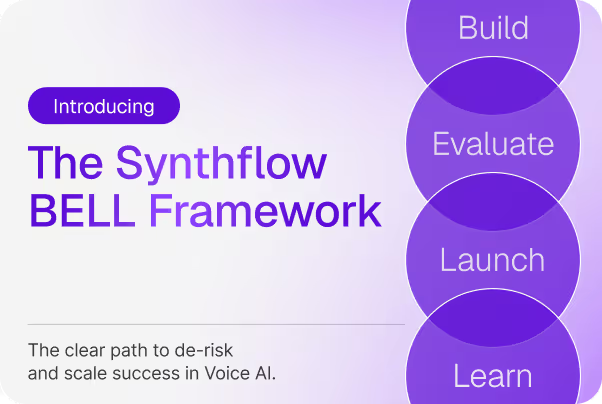Customer Support
What’s the Difference Between a Cold vs Warm Transfer?

Table of Contents

In customer support, sales, and contact center operations, not all call transfers are created equal. Some pass the caller to the next agent with zero context. Others tee up the transition so everyone’s on the same page.
These two scenarios are known as cold transfers and warm transfers. Understanding the difference is essential—especially if your team is automating call flows or using AI voice agents to handle first-touch conversations.
In this article, we’ll break down the difference between cold and warm transfers, explore when to use each, and show how AI systems like Synthflow support intelligent handoffs.
What Is a Cold Transfer?
A cold transfer (also called a blind transfer) is when a caller is transferred to another agent or department without any prior introduction or context being passed along.
It’s a direct pass:
- The first agent hangs up as soon as they transfer the call.
- The receiving agent picks up with no knowledge of the caller’s issue, history, or mood.
Example:
A customer calls support and says, “I need help with billing.”
The agent says, “Let me transfer you,” presses a button, and the line starts ringing.
The next person answers: “Hello, how can I help you today?”
This is often frustrating for the customer—especially if they need to repeat themselves.
What Is a Warm Transfer?
A warm transfer is when a call is passed to another agent with context—either through a live introduction, pre-transfer chat, or system message.
There are a few ways to execute a warm transfer:
- A human agent stays on the line to introduce the caller before disconnecting.
- The agent shares call notes or a CRM entry with the next agent before transferring.
- An AI voice agent provides metadata or summaries with the transfer request.
Example:
A customer calls to schedule service. The AI voice agent gathers the vehicle type and availability preferences, then transfers to a human.
The live agent picks up and sees:
“Caller wants to schedule an oil change for a 2021 Ford F-150, prefers Thursday afternoon.”
This eliminates repetition, shortens handle time, and improves customer experience.
Key Differences: Cold vs Warm Transfer
When Should You Use Each?
Cold Transfers Work Well When:
- The issue is simple and can be handled by any available agent.
- Speed of transfer is more important than continuity.
- Call volumes are high and need fast routing.
- The caller has not provided much context yet.
Warm Transfers Are Best For:
- Escalations or priority cases
- Sales handoffs from SDR to AE
- Support conversations involving emotion or sensitive topics
- Scheduling and service flows where key info has already been collected
- AI voice agents handing off to humans (e.g., failed automation, fallback)
In general, cold transfers save time, but warm transfers save face.
How AI Voice Agents Handle Transfers
Modern AI voice agents—like those built with Synthflow—can perform conditional call transfers with:
- Context-aware logic (e.g., only transfer if a customer mentions a live agent)
- Structured metadata (e.g., appointment reason, name, location)
- Configurable routing (e.g., transfer to the right store or department)
- Custom messages passed to the receiving agent
This allows the AI to handle the front of the conversation, then execute a warm transfer when human interaction is needed.
For example:
“Let me connect you to our support team. They’ll have the details I collected so far.”
Synthflow’s “Phone Book” feature allows teams to predefine transfer logic—by location, service type, or fallback condition—without writing code.
Technical Setup: SIP, Webhooks, and APIs
Whether you're using Twilio, SIP trunking, or your own contact center platform, AI voice agents can trigger:
- Cold transfer: Call is redirected to a number or SIP address with no payload
- Warm transfer: AI sends metadata or customer intent to the destination system, either by SIP headers, webhook, or CRM sync
Synthflow supports both methods and allows configuration via UI or API, depending on your enterprise setup.
Final Thoughts
Cold and warm transfers aren’t just technical distinctions—they define the customer’s experience.
- Cold transfers are fast, but impersonal.
- Warm transfers require more setup, but deliver better outcomes.
As businesses move toward AI-first call handling, understanding the difference—and configuring your voice agents accordingly—can dramatically improve first-call resolution and customer satisfaction.
If you're using Synthflow, you can configure both cold and warm transfers without writing code—giving your AI the ability to route calls intelligently, and your team the context they need to succeed.
Seamless call transfers keep customers engaged and teams productive. See how Synthflow’s advanced routing makes it effortless. Book a demo today.



.avif)